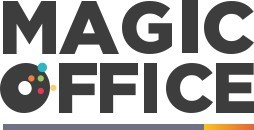
Defining the Pillars of Interdepartmental Synergy
Essential Elements Shaping Interdepartmental Synergy
Effective interdepartmental collaboration is pivotal for the innovative and dynamic progress within any organization. At its core, synergy within teams hinges on certain foundational elements. As a distinguished office management analyst, I've consistently seen team synergy amplified through clear communication, shared goals, mutual respect, and an integrated approach to problem-solving. Strategic alignment allows for a shared vision, leading to a cohesive effort where departmental synchronization boosts overall productivity.
Cultivating a Culture of Open Communication
Statistics reveal that companies with effective communication practices are 4.5 times more likely to retain the best employees. Thus, fostering an environment where dialogue flows freely across departments is crucial. Tools like Slack or Microsoft Teams can facilitate this, but it's the personal connections that turn conversations into collaborations. Cultivating this culture goes beyond mere interaction; it's about creating a space where every voice has the potential to echo with innovation.
Incorporating Shared Goals to Align Teams
Research shows that organizations with highly aligned teams see a 32% increase in annual revenue. Shared goals serve as the northern star for departmental efforts, guiding disparate teams toward a unified destination. Whether it's increasing market share or enhancing customer satisfaction, aligning objectives ensures that each department is not just rowing the boat but also rowing in the same direction. Highlighting the benefits of shared success can lead to a shared sense of purpose that transcends departmental boundaries.
Fostering Mutual Respect and Recognizing Strengths
Mutual respect is the mortar that holds the bricks of collaboration together. Teams that recognize and appreciate each department's unique strengths and contributions are more likely to achieve efficacious interdepartmental synergy. A study by Google found that 'psychological safety', a belief that one will not be punished for speaking up with ideas, questions, concerns, or mistakes, is fundamental for team success. This environment of trust positions teams to harness the collective expertise, creating a powerhouse of performance.
Embracing Integrated Problem-Solving Techniques
In the face of complexity, an integrated problem-solving approach is instrumental. This means shifting from 'your problem, my problem' to 'our challenge' within the workplace context. Statistics indicate that teams employing cross-functional collaboration are 3 times more likely to address issues promptly and effectively than those working in silos. Integrated problem-solving methodologies like Design Thinking can galvanize diverse departments, merging perspectives to unearth innovative solutions that might otherwise remain buried in departmental divide.
Unraveling the Challenges to Team Integration
Identifying Barriers to Seamless Team Integration
Despite the well-documented benefits of collaborative work environments, numerous challenges can obstruct the pathway to efficient interdepartmental synergy. Statistics suggest that 39% of employees believe that people in their own organization don’t collaborate enough. A key obstacle often lies in poor communication, cited by 86% of executives as the root cause of workplace failures. Overcoming these barriers requires a clear understanding of diverse departmental cultures and the recognition that every team has its unique set of goals and procedures.
Breaking Down Silos to Encourage Information Sharing
To address the issues of isolated work environments, office managers must strive to dismantle 'silos' that prevent free exchange of ideas and information. Example practices include cross-departmental meetings and shared digital workspaces that can increase visibility and transparency. According to a McKinsey report, social technologies can raise the productivity of high-skill knowledge workers by up to 25%. By fostering an infrastructure that encourages connectivity, leaders can eliminate silos and pave the way for seamless collaboration.
Addressing the Discrepancies in Team Goals and Expectations
It's crucial to ensure that departmental targets are aligned with the overall objectives of the organization. A study shows that companies with highly aligned employees are up to twice as likely to be top performers. An Office manager must facilitate sessions to set expectations and harmonize goals across teams. Real-world examples include joint goal-setting workshops and integrating departmental objectives into the company's balanced scorecard.
Contending with the Dynamics of Change Resistance
Change is often met with resistance, and the office manager's role involves managing these dynamics delicately. Statistics reveal that 70% of change initiatives fail to achieve their desired outcomes. The reasons for resistance can range from fear of the unknown to perceived loss of control. Quoting John Kotter, a renowned expert on change management: 'People change what they do less because they are given an analysis that shifts their thinking than because they are shown a truth that influences their feelings.' Thus, strategic initiatives should not only present logical rationales but also connect on an emotional level to drive change.
Strategies for Building Bridges Between Departments
Building Effective Communication Channels
One of the driving forces behind successful interdepartmental collaboration is clear and consistent communication. Office collaboration tools like Slack and Microsoft Teams have revolutionized the way departments interact. Industry statistics reveal a surge in the adoption of collaborative platforms, with a reported 21% increase in collaboration software spending in 2020 alone (Forbes). By centralizing communication channels, office managers ensure a seamless flow of information, tearing down the silos that typically hinder team integration. Moreover, establishing regular interdepartmental meetings and utilizing shared calendars can keep all teams aligned on common goals.
Implementing Cross-Functional Teams
Creating cross-functional teams that draw upon a diverse set of skills and expertise across departments can lead to pioneering problem-solving strategies. A Harvard Business Review analysis indicates that cross-functional teams can boost organizational performance by up to 35% (HBR). By facilitating task forces for specific projects, office managers encourage the exchange of ideas and perspectives, leading to innovative solutions that may not arise within homogenous groups.
- Regular strategy workshops
- Joint problem-solving sessions
- Knowledge sharing forums
Enhancing Team-building Initiatives
Team-building activities pave the way for improved relations and collaboration. They are not just fun but functional, serving as a platform to foster trust and camaraderie between departments. According to the American Society for Training and Development, companies that invest in extensive team-building efforts can see a 50% increase in positive communication patterns (ASTD). Such activities range from casual mixers to structured workshops aimed at enhancing team synergy.
Leveraging Leadership Support
Leadership plays a pivotal role in modeling and driving interdepartmental collaboration. When leaders prioritize and champion collaborative efforts, it sets a tone for the rest of the organization. A study from McKinsey & Company reports that executive buy-in is a critical success factor for 81% of companies who implement organizational change (McKinsey). An office manager can work with executives to integrate collaborative benchmarks into performance metrics, thereby incentivizing interdepartmental initiatives.
Fostering a Culture of Shared Success
The foundation of sustained interdepartmental collaboration lies in nurturing a workplace culture that recognizes and celebrates shared successes. When outcomes are achieved collaboratively, it's vital that contributions from all sides are acknowledged. This not only enhances morale but also reinforces the importance of teamwork in realizing organizational objectives. Celebrating joint wins leads to a 12.5% increase in productivity and a stronger commitment to future collaborative endeavors (Institute of Corporate Productivity).
Measuring the Impact: Key Performance Indicators for Collaboration
Key Performance Indicators for Evaluating Collaborative Success
To ascertain the effectiveness of interdepartmental collaboration, it's crucial to track specific Key Performance Indicators (KPIs). These metrics provide quantifiable objectives that help office managers gauge progress towards fostering team synergy. A common statistic cited by experts reveals that businesses with strong alignment between departments see 38% higher sales win rates (MarketingProfs). Thus, one vital KPI is the conversion rate, which measures the percentage of initiatives that turn into completed projects or sales.
Monitoring Workflow Efficiency Through Data
Another pivotal KPI involves evaluating workflow efficiency. Illustratively, a McKinsey study found that improved communication and collaboration through social technologies could raise the productivity of high-skill workers by 20-25% (McKinsey). Real-time monitoring of project timelines, documenting frequency of cross-departmental meetings, and assessing the ease of information transfer are all specific metrics that fall under this category.
- Project Completion Rate
- Cross-Departmental Milestones Reached
- Average Time from Idea to Execution
Assessing Cultural and Social Outcomes
While numerical data is invaluable, assessing the cultural and social outcomes of collaboration efforts is equally important. The employee engagement score is a performance metric reflecting the enthusiasm and dedication a workforce exhibits. A Gallup report suggests that businesses with high employee engagement report 21% greater profitability (Gallup). Evaluation parameters might include surveys on interdepartmental trust levels or satisfaction rates with collaborative processes.
Using Customer Feedback to Measure External Impact
Finally, don't overlook the importance of customer feedback as a performance indicator. When departments collaborate effectively, customer satisfaction often improves, as indicated by a customer satisfaction index. The American Customer Satisfaction Index (ACSI) notes that customer satisfaction correlates directly with profitability (ACSI). Gathering data through customer surveys and net promoter scores can paint a picture of the external efficacy of interdepartmental synergy.
Sustaining Collaboration: Long-Term Initiatives for Continuous Improvement
Sustaining Interdepartmental Collaboration
Just as nurturing a garden requires ongoing attention, sustaining collaboration in a business context is about embedding continuous improvement into the organizational culture. According to recent statistics, companies that focus on collaboration are five times more likely to be high-performing. A perennial approach to fostering team synergy includes regular review and renewal of goals aligned with corporate objectives.
Enduring Strategies for Teamwork Excellence
- Regular Cross-Training Sessions: Rotate team members through different departments to enhance understanding and foster empathy.
- Annual Retreats: Organize workshops to reflect on collaborative successes and work on areas of improvement.
- Technology Integration: Leverage collaborative tools and platforms to ensure seamless communication and project management across departments.
Implementing these strategies can help maintain the momentum of collaboration, leading to a robust and cohesive workplace environment, as highlighted by leading organizational psychologists.
Key Metrics for Ongoing Success
Embedding key performance indicators (KPIs) related to collaboration into regular performance reviews encourages teams to prioritize interdepartmental synergy. Metrics such as the number of collaborative projects executed, the average resolution time for interdepartmental issues, and feedback scores from team members can provide quantifiable insights. A 2020 survey emphasized that organizations employing such metrics saw a 35% increase in successful project delivery.
Long-Term Initiatives for a Collaborative Culture
To ingrain teamwork as a corporate value, long-term initiatives are crucial. Examples include mentorship programs pairing employees from different departments and recognition systems rewarding effective collaboration. Reports from industry leaders underscore the effectiveness of these long-term strategies, revealing a correlation with a 20% rise in employee satisfaction.
"Collaboration is a journey, not a destination," as renowned management consultants often remark. It reminds us that the work environment is dynamic and so must be the ongoing efforts to foster interdepartmental teamwork.
